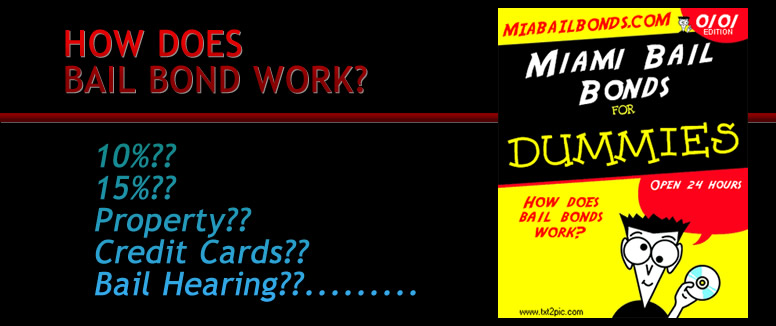How Bail Bonds Work
Bail involves a process in which a defendant is released in exchange for money. This money is a type of “insurance” that the defendant will show up for his or her court dates. Bail exists because trials can take weeks or months to work their way through the court system and bail permits a defendant who may be innocent to wait for their trial at home, while pursuing normal activities.
The Bail Process
Once a person is arrested for a crime, they generally are taken to a Miami Dade Corrections facility (Pre-Trial Detention or TGK) for booking purposes. This involves recording information about the crime that allegedly has taken place, as well as basic information about the suspect. During booking, a correctional officer usually will take a mug shot and fingerprint the suspect. Then they will run a background check on the suspect. The officer will hold onto any of the suspect’s personal property this will be returned to the suspect when he or she is released. The officer generally will allow the suspect to make a phone call and will check the suspect for alcohol levels or mental status. After the booking procedure, the suspect is incarcerated in a jail cell or temporary lock-up.
For most crimes, the suspect is allowed to post bail immediately. In cases where the person is out on another bond and gets arrested again or domestic violence cases such the suspect will have to wait in jail usually no more than 24 hours for a bail bond hearing. At the bail hearing, a judge or magistrate will decide whether the suspect may be released on bail bond. The judge then will decide the amount of bail bond.
When determining bail bond amount for a suspect, the judge will consider the suspect’s flight risk and the severity of the crime. If a suspect has a criminal history, or a history of not showing up for court appearances, that may affect a judge’s decision about bail. The judge may consider whether the suspect is a risk to others, whether the suspect has ties to the community, the stability of residence, work history and the nature of the crime. As a result of this information, release conditions and bail terms are established. Ultimately, the bail is at the judge’s discretion, although some jurisdictions have bail schedules, which set a standard bail amount.
Posting Bond
Once a judge has determined an amount for bond, the suspect usually can be released if he or she posts the bond in cash or in assets. If the accused or the family of the accused does not have the money or the assets to pay for bond, they can apply to a bail bondsman. The bail bondsman will take a percentage of the bond amount 10 percent of the bond money for the state offenses or 15 percent for federal offenses so that the suspect can leave jail. If a suspect cannot afford bail or a bail bondsman, he or she can appeal the bond through his or her attorney.
Types of Bonds
Here are some of the most common types of bonds that a judge can set:
Surety Bond – In a surety bond, a bai bondl agent or bail bond company guarantees the court that they will pay if an accused does not show up in court. A surety company or the agent’s property is used as a guarantee.
Cash Bail – With cash bail, the accused must post bail in cash – not in assets. This type of bail is considered a strong incentive for the accused to show up in court, since the accused will forfeit the cash if they fail to show up for all of their court appearances.
Release on Personal Recognizance – In this situation, the accused is released without any financial motive to secure their return. This sort of bail usually is through county or law enforcement administered pre-trial release programs.
Map
View Miami Bail Bonds Service in a larger map
Notary Public Service
If you need to get a notarized letter, notary public, notarized form, or notarial work, please make sure that your document is fully written.

Main Office1465 NW North River Drive
Miami, Florida 33125
Ph. (305) 828-2227

